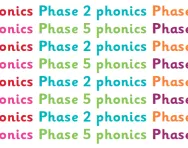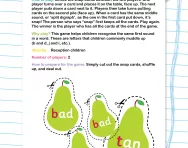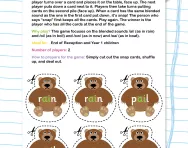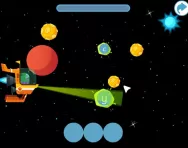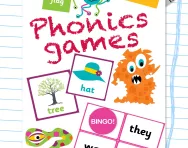Important update from TheSchoolRun
For the past 13 years, TheSchoolRun has been run by a small team of mums working from home, dedicated to providing quality educational resources to primary school parents. Unfortunately, rising supplier costs and falling revenue have made it impossible for us to continue operating, and we’ve had to make the difficult decision to close. The good news: We’ve arranged for another educational provider to take over many of our resources. These will be hosted on a new portal, where the content will be updated and expanded to support your child’s learning.
What this means for subscribers:
- Your subscription is still active, and for now, you can keep using the website as normal — just log in with your usual details to access all our articles and resources*.
- In a few months, all resources will move to the new portal. You’ll continue to have access there until your subscription ends. We’ll send you full details nearer the time.
- As a thank you for your support, we’ll also be sending you 16 primary school eBooks (worth £108.84) to download and keep.
A few changes to be aware of:
- The Learning Journey weekly email has ended, but your child’s plan will still be updated on your dashboard each Monday. Just log in to see the recommended worksheets.
- The 11+ weekly emails have now ended. We sent you all the remaining emails in the series at the end of March — please check your inbox (and spam folder) if you haven’t seen them. You can also follow the full programme here: 11+ Learning Journey.
If you have any questions, please contact us at enquiries@theschoolrun.com. Thank you for being part of our journey it’s been a privilege to support your family’s learning.
*If you need to reset your password, it will still work as usual. Please check your spam folder if the reset email doesn’t appear in your inbox.
Phonics letters and sounds interactive resource
What are phonics letters and sounds?
Phonics letters and sounds encompass a teaching approach for reading and spelling that emphasises the connection between sounds (phonemes) and the letters (graphemes) representing them in written language. While some may refer to them as alphabet sounds, they're commonly known as phonics in primary school education.
How can you distinguish between letters and sounds?
Letters denote the written characters used in words, each with its own distinct shape like 'A', 'B', 'C', and so forth. They are employed when writing words on paper or typing them on a screen. For instance, in the word 'cat,' the letters 'c,' 'a,' and 't' are used.
Sounds, on the contrary, are the auditory expressions we produce when speaking. For example, in saying 'cat,' three sounds are made: 'kuh,' 'aah,' and 'tuh,' each representing a component of the word.
The interesting part is that each letter corresponds to a sound. So, when reading the letter 'C,' one knows it produces the 'kuh' sound as in 'cat,' and 'A' typically represents the 'aah' sound, also in 'cat.'
Teaching phonics aids children in grasping these associations between letters and sounds. When they encounter the word 'cat,' they can discern the sounds the letters represent and blend them together to articulate the word.
What does this Phonics letters and sounds resource offer?
This fun and engaging phonics resource is easy to use and helps your child practice their letters and sounds. To use this interactive sound resource, click the orange 'Start the tutorial' button then follow the instructions, clicking the letters and graphemes to hear each sound.
Here's a link to the printable version of the Phonics sounds worksheet.
Look through all the phonics worksheets, activites and games on TheSchoolRun to find the best resources for your child. You can also download free phonics sound mats.

